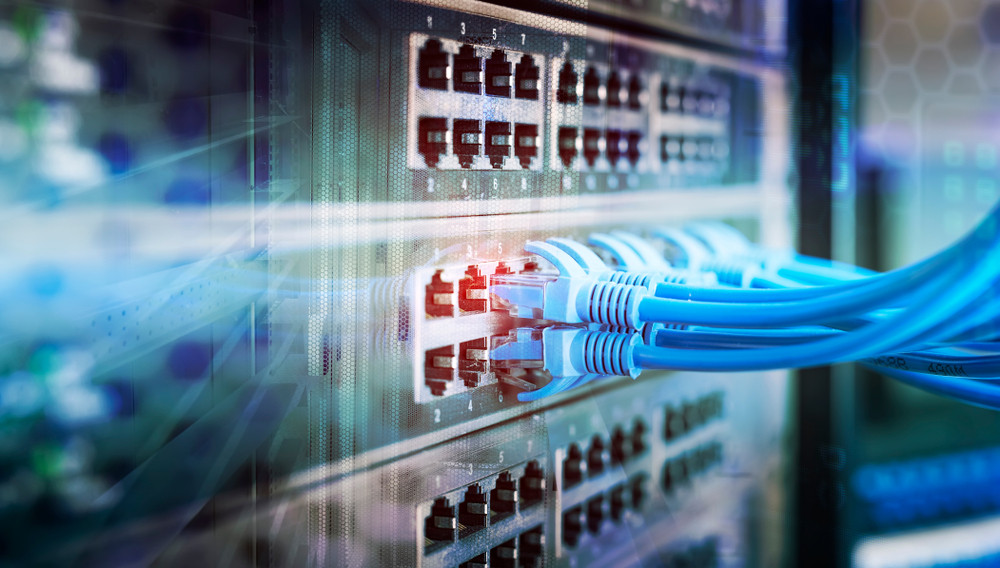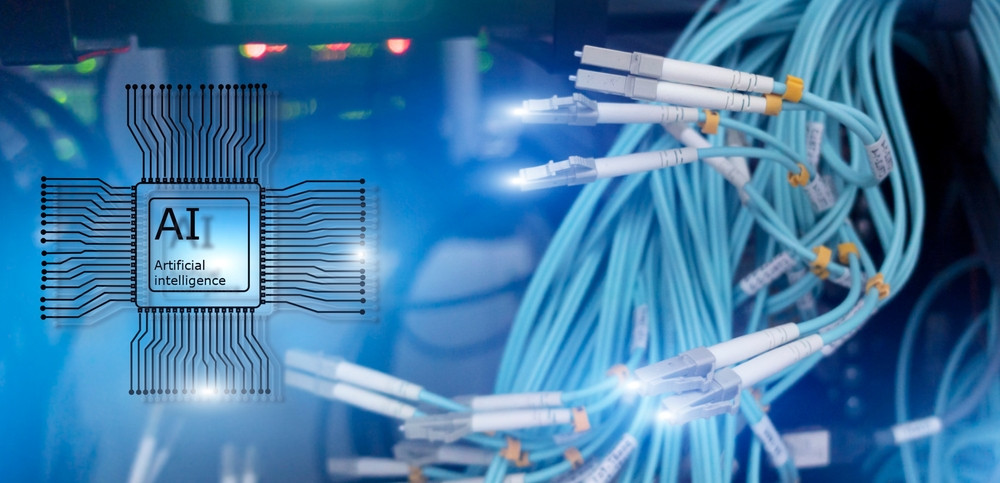InfiniBand vs. Ethernet: Navigating AI Networking Choices

In AI data centers, interconnects that decrease latency and increase throughput across GPU clusters affect AI workload performance. The rise in AI installations has forced data centers to rewire their infrastructure to match AI's compute-intensive needs for InfiniBand vs. Ethernet for AI. InfiniBand is the standard for high-performance AI clusters thanks to its low latency and bandwidth. Meanwhile, with RDMA and Ultra Ethernet Consortium advancements, Ethernet is becoming cost-effective and scalable for hyperscale applications.
AI-Specific Networking Needs
- Data Transfer Requirements: AI workloads generate massive data that need constant movement between nodes, measured in terabytes or more. Keeping training efficiency requires networks with ultra-high throughput and the least packet loss. InfiniBand has been the standard with its lossless fabric. Still, Ethernet with RoCEv2 and packet spraying is closing the gap for similar performance with decreased cost.
- Latency Sensitivity: AI workloads in training phases utilize data synchronization between GPUs during all-reduce operations. Even microseconds of latency can delay job completion and impact throughput. InfiniBand's RDMA is built for this. However, Ethernet has been enhanced by dynamic load balancing and congestion control from the UEC, which can attain sub-millisecond latencies to approach InfiniBand.
- Scalability: With AI models growing in complexity, network infrastructures must scale. InfiniBand scales through its multi-level topologies but may become costly. Through Distributed Disaggregated Chassis and lossless fabrics, Ethernet provides flexible scaling across GPUs for similar performance using widely adopted hardware.
- Cost Efficiency: InfiniBand delivers high performance but at a cost due to proprietary hardware and vendor lock-in. Meanwhile, Ethernet can cut hardware expenses by one-third without losing AI network features. Upcoming UEC-driven improvements may make Ethernet's cost-per-port more attractive in AI and HPC workloads.
InfiniBand vs. Ethernet: Speeds, Latency, and Throughput in AI
Speeds and Latency in InfiniBand vs. Ethernet for AI
Its ultra-low latency and immense throughput make InfiniBand ideal for AI and HPC applications where microseconds count. RDMA bypasses the kernel to directly transport data across memory areas to eliminate CPU overhead in InfiniBand with latencies as low as 1-2 microseconds. For large-scale distributed workloads, including allreduce operations, this architecture helps train AI models across GPU clusters. InfiniBand can deliver 800 Gb/s per port and 51.2 Tb/s aggregate bandwidth, scaling with application complexity.
The zero-packet loss design prevents retransmissions for lower AI training task data transfer wait times. Low latency boosts GPU synchronization for maximum AI accelerator use. The network switching market for AI workloads is less than 10%, with 90% utilizing InfiniBand. While InfiniBand delivers performance, its higher costs and reliance on vendors can limit its broader adoption outside of HPC environments. Although InfiniBand can improve AI training performance by 20%, it may come at a higher price point than Ethernet.
Throughput and Advancements in Ethernet for AI Applications
Ethernet, a general-purpose network, can now compete with InfiniBand in AI. While 400 Gb/s Ethernet is used, 800 Gb/s standards are being developed and projected to become commonplace by 2025. Due to RoCEv2 and greater speeds, Ethernet may decrease latency to sub-microsecond levels in AI applications. Direct memory access between nodes offloads most of the CPU burden to free up resources for computational workloads using RoCEv2.
Using packet spraying and dynamic load-balancing, Ethernet is adapting to meet AI data center needs in large AI clusters with GPU utilization. What is more, Ethernet can complete AI models 10% quicker in large-scale contexts. It shows a change in cloud and AI infrastructure architects' priorities. Ethernet's network architecture cost-effectiveness renders it appropriate for hyperscalers scaling AI workloads while managing capital expenditures specific to AI data center growth. Its switch revenue might rise 20 points by 2027.
Cost Efficiency in AI Networks

Incremental Upgrades in AI Networks
Ethernet's flexibility allows AI data centers to build their network infrastructure progressively, specifically to deal with AI workloads that demand constant scaling. Data centers may increase from 100 to 400 or 800 Gb/s without changing the network fabric. New GPUs or servers with larger bandwidth needs may be incorporated into the network. So, the method suits gradual AI cluster deployment. Ethernet's support for modular designs, including the DDC, lets enterprises scale as AI workloads expand to cut upfront capital costs.
Backward Compatibility Reducing TCO
One of Ethernet's advantages in the InfiniBand vs. Ethernet for AI is its backward compatibility. Legacy investments may be preserved while integrating RoCEv2 and 800 Gb/s ports into Ethernet networks. With current network infrastructure like switches, cables, and optics, while benefiting from cutting-edge advances, AI data centers may minimize their total cost of ownership. On the other hand, InfiniBand networks may require proprietary hardware updates, which can impact operational costs. It can also present challenges in certain large-scale AI implementations, depending on the specific infrastructure needs.
Widespread Adoption and Vendor Interoperability
AI settings must avoid vendor lock-in, so Ethernet's open standards are key. Its broad usage keeps equipment from multiple manufacturers compatible, giving options. As AI networks reach tens of thousands of nodes, vendor variety may lower prices. It renders pricing more competitive and will enable enterprises to implement newer technologies without committing to a single vendor. On the other hand, InfiniBand may depend on the vendor. AI adoption will boost data center networking capacity and expand the data center switch market by 50%.
Future-Proofing AI Networks
As AI grows, the InfiniBand vs. Ethernet topic becomes more complex. Ethernet changes fast due to the Ultra Ethernet Consortium, packet spraying, and dynamic load balancing, which help it meet AI clusters. Remember, Meta's recent Ethernet deployment for AI workloads is already improving task completion times before further Ethernet enhancements.
Ethernet's flexibility, cost-effectiveness, and ability to accommodate 800 Gb/s ports by 2025 make it suitable for AI's next phase. Besides, Ethernet's compatibility with existing infrastructure and lower operational costs support future compute-intensive workloads without vendor lock-in as generative AI and large-scale neural networks proliferate.
Conclusion
UfiSpace's 800G and 400G Ethernet switches are ideal for AI applications and scaling data centers. Our switches provide high-throughput, low-latency situations with disaggregated architecture. When comparing 'InfiniBand vs. Ethernet for AI,' Ethernet's network architecture can offer flexible, scalable, and cost-effective solutions for large-scale AI workloads and HPC data center installations without losing reliability. Click here for more.
